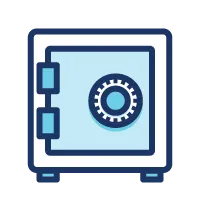Key Takeaways
- How a cash-out auto refi works
- When it makes sense to do a cash-out auto refi
- Risks of doing a cash-out auto refi
- Alternative options
In the past, a cash-out auto refi was rarely a good idea. Unlike homes that tend to increase in value, automobiles typically would go down in value, which depleted any equity you may have had. New cars typically would lose 10% of their value the second you drove them off the lot and then another 50% in just the first five years.
But with the price of used cars increasing, many drivers are now finding themselves with something they’ve rarely, if ever, had before: equity in their vehicles.
Car owners are now asking, is a cash-out auto refi a good idea? Let’s talk about what a cash-out auto refi is, how to do it, and when it makes sense to do so.
What is a Cash-Out Auto Refi?
The good news is that a cash-out auto refi is simple.
You’re simply taking the equity you have in your vehicle and turning it into cash by refinancing your car or truck with a brand new auto loan.
Example
Let’s say Emma drives a 2020 Kia Sorento that is currently valued at $27,000 and she owes $18,000. This means she has $9,000 in equity in her vehicle.
When doing a cash-out auto refi, she is getting a new loan for $30,000, paying off the existing loan for $18,000 and then taking the $12,000 leftover in the form of cash.
However, not all lenders will allow her to finance 100% of the value of the vehicle. Oftentimes lenders will only allow a loan up to 75% of the vehicle’s value. When this happens, Emma is now only getting $4,500 in the form of cash.
New Loan
$30,000
Amount Lender Will Finance
75%
New Loan Actual Value
$22,500
When she pays off the $18,000 existing loan with the new loan of $22,500, she’ll have $4,500 remaining for the cash-out.
Does a Cash-Out Auto Refi Make Sense?
On the surface a cash-out auto refi may seem like the perfect solution, but you should still work through the numbers to make certain it's worth it for you.
Let’s assume you have an original auto loan for $25,000 at an annual interest rate of 5% over 60 months. Your monthly payment for your loan is $472 and you’ll pay a total of $3,320 in interest over the entire 60-month loan.
Original Auto Loan: $25,000 for 60 months at 5% APR
Monthly Payments: $472 for 60 months is $28,320
Total Interest Paid: $3,320 interest
A year into your loan, you’ve paid down the balance to $20,000 and your car went up in value and is now worth $30,000. You now have a total of $10,000 equity in your car.

When deciding on a cash-out auto refi, your lender will approve 75% of the car’s new value, which means $7,500 will be used as the down payment for your new loan and the leftover $2,500 cash in your pocket.

The new loan restarts with a $22,500 balance ($30,000 value minus 25% down payment from your equity), the same 5% APR, and also restarts the 60-month term all over.
Your new payment is now $425 per month with the following breakdown of total cost for you new loan:
New Auto Loan: $22,500 for 60 months at 5% APR
Monthly Payments: $425 for 60 months is $25,500
Total Interest Paid: $3,000 interest new loan + $1,150 interest original loan
In the above example, the cash-out auto refi will add an additional $830 in interest payments to put $2,500 in your pocket and also extend your original 60-month loan by an additional 12 months.
The Added Risk
Right now a cash-out auto refi still may make sense because car values have gone up in the past few years. But this is not the norm. Remember, up until the summer of 2020 when the price of used cars started trending up, a new car would lose 60% of its value in the first five years.
This would create a large gap between what you owe on your vehicle and what is worth — also known as being upside down in your auto loan.
The past doesn’t prove what will happen in the future, but it allows us to make predictions on what may happen. If and when supply chain issues are corrected and the economy once again rebounds, the price of used cars could possibly go down in value.
Have a Plan for the Cash
Before you decide to follow through with the cash-out auto refi, make sure you have a valid reason for needing the cash in the first place.
When doing a cash-out auto refi, you’re creating a brand new loan which also creates a new term. By restarting with a new loan, you could potentially pay more in interest in the long run.
Pro Tip: Typically, a cash-out auto refi is considered when the owner of the vehicle is in need of quick cash. With title loans lenders charging an average 300% APR, a cash-out auto refi through a local credit union is still a much better alternative.
However, you may still have better options in lieu of a cash-out auto refi.
Alternatives to a Cash-Out Auto Refi
While a cash-out auto refi can definitely work, it’s always a good idea to know all of your options when it comes to turning equity into cash.
Pro Tip: If you’re currently a homeowner with equity in your home, consider either a cash-out refi, a home equity loan, or a home equity line of credit (HELOC) as an alternative to a cash-out auto refi.
Cash-out refi. A cash-out refi with your home mortgage works just like a cash-out auto refi. However, instead of using the equity in your car, you will refinance your home mortgage and turn the equity from your home into cash with a brand new loan. With much less volatility in real estate versus the up and down automobile market, this may be a better option than a cash-out auto refi.
Home equity loan. Another option is a home equity loan which is a fixed-rate second mortgage on your home that uses the home’s equity to back the loan. That equity is then issued in a lump sum in the form of cash.
HELOC. A third alternative is a home equity line of credit (HELOC). A HELOC is also a second mortgage on your home, however instead of a fixed rate and a lump sum payout, the equity is in the form of a line of credit with a variable interest rate. With a HELOC, you only pay interest on the amount you draw on the line of credit.
Personal loan. If you’re not a homeowner or you don’t have enough equity in your home, a personal loan may be another great alternative. A personal loan is an unsecured loan, which may result in slightly higher interest rates than you will see with a cash-out auto refi. Typically you’ll find the lowest rates on personal loans at local credit unions.
Life happens. Use your home's equity to ensure you’re prepared for all of life’s moments.
Put your home’s equity to work with a OneAZ HELOC or home equity loan.
4 Steps to a Cash-Out Auto Refi
If you’ve looked through your options and decided the cash-out auto refi makes sense for you, follow these steps before you sit down with your lender so you can walk away with the best outcome.
1. Determine the Value of Your Vehicle
If you think you may have equity in your used car, do some research to determine exactly how much you have.
The quickest way to determine your vehicle’s value is to search your car’s value on websites such as Kelley Blue Book, Edmunds and NadaGuides. These sites can give you an idea of what your used car may be worth, but what you find won’t necessarily be the exact value of your car.
The lender will also check the value of your vehicle using their own data points like mileage, condition, modifications, and any accident history to report. They may even do a vehicle inspection.
2. Research Your Credit Score
Like with any loan you apply for, your credit score will help determine the rate and term you’ll receive. The better your credit score, the lower the rate and the more favorable term you’ll receive with your new loan.
Beyond your credit score, pull your credit report from all three credit bureaus: Equifax, Experian and TransUnion. You can get a free copy of all three credit reports at AnnualCreditReport.com.
Carefully look through all three and if you find any errors, report them to the credit reporting agency where you found the error. By law, credit reporting agencies have 45 days to fix the error and update your credit report.
3. Research Lenders
Once you know the estimated value of your vehicle and you’re sure your credit report is accurate, the next step is to research lenders for your cash-out auto refi.
Pro Tip: You will typically find better rates at credit unions over banks. The reason for this is that banks are investor-owned and must create profits through their customers to pass onto investors.
Credit unions on the other hand are not investor-owned. Instead, they’re owned by the members of the credit union. As a member of a credit union, you’ll see those savings passed onto you in a number of ways, including in the form of lower interest rates on loans.
4. Gather Your Documentation
Here’s the documentation you’ll need to start the cash-out auto refi process with your lender:
- Vehicle history report. Your lender will do their own research on the vehicle, but it’s still a good idea to have a vehicle history report on hand.
- Maintenance records. Any updates, repairs, or maintenance records should be included which will help you when appraising the vehicle.
- Current loan documents. The lender for the cash-out auto refi will need to see the information for your current lienholder to determine the payoff amount.
- Proof in insurance. Before the lender is ready to refinance your current auto loan, you’ll need to provide proof of your current auto insurance.
- Proper identification. Lastly, you’ll need to verify your identity with at least two forms of identification. This typically includes your driver's license and then a second form of identification.
Right now a cash-out auto refi may feel like the perfect solution to turning your car’s equity into cash.
However, it’s not for everyone.
Once you’ve determined the costs and the risks, decide if a cash-out auto refi or one of the other alternatives mentioned above is the best option for turning your equity into cash.
Chris “Peach” Petrie is the founder of Money Peach. Money Peach partnered with OneAZ to provide free financial education to members across the state. To learn more about OneAZ’s partnership with Money Peach, click here.
APR = Annual Percentage Rate













